Father and son make Halloween accessible to kids with disabilities one custom costume at a time
From festive decorations to trick-or-treating, 18-year-old Reese Davis has always loved Halloween. But for him, dressing up was more than fun – it was a way to fit in.
“Halloween was like the main time that I was just like everyone else,” the high school senior explains. “I just had a cool costume, and so it made me feel like I belonged more. I was more normal to other kids instead of always being the kid in the wheelchair.”
When Reese asked his dad, Lon, to make his first wheelchair costume 15 years ago, neither had any idea the doors it would open for Reese and kids like him across the country. Today, their work has inspired a growing movement for more inclusion and accessibility in Halloween.
“My wheelchair is part of me”
Reese was born with Stage 4 neuroblastoma, a rare cancer in young children, and the tumor in his neck crushed his spinal cord. In remission since his first birthday, Reese got his first wheelchair at three years old – the same year he started preschool. But the other kids in his class didn’t know how to interact with him in his chair and stayed away.
For the school’s Halloween parade, Reese wanted to dress up as the Pixar robot WALL-E, but there weren’t many premade, accessibly designed costumes available. Reese and Lon realized they’d have to make their own – with one requirement from the adamant little boy.
“He told me that, ‘You know, you can’t just make a costume for me. It has to go around my wheelchair because my wheelchair is part of me,’” Lon recalls. “It kind of stuck in my head for a while that he thought of himself as one with the chair.”
While Lon had studied 2D drawing in college, building in 3D was entirely new to him. Determined to figure it out, he learned on the fly, getting creative with a cardboard computer box and some paint.
The icebreaker
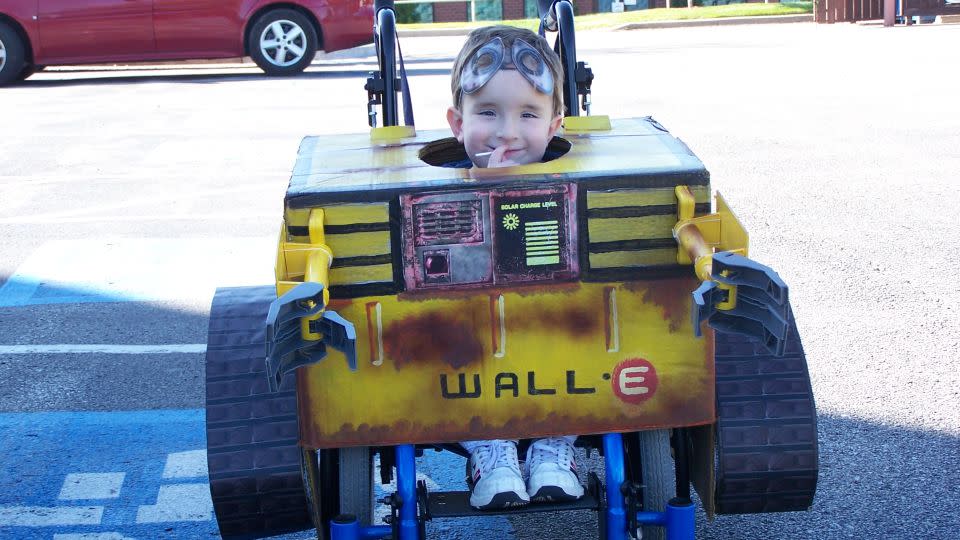
When it came time for the big reveal at school, Lon remembers Reese “only got about two feet into the classroom” before all the kids “swarmed him” to marvel at his costume. They fought over who would sit next to him, play with him, and eat with him at snack time.
“Reese just felt like he was the most popular kid in the class. It was the first time he had ever felt that way,” Lon says.
But would it last? Lon and Reese’s teachers braced themselves for the Halloween fervor to die down.
“What ended up happening is that November first came around, and he was now just thought of as another kid in the class,” Lon says. “They were his friends then. And that costume ended up being kind of the icebreaker that really showed the other kids that he’s just another kid like you.”
Reese’s costume became something his new friends looked forward to every fall, and “they didn’t see the wheelchair as much anymore,” he says.
“Can you build one for my kid?”
Photos of Reese’s costume quickly made their way across social media, grabbing attention of complete strangers across the country.
“We were starting to get contacted by families we didn’t know and they’re like, ‘Can you build one for my kid?’ And at first we just kind of didn’t think anything,” Lon recalls. Requests poured in again the following year after Reese’s homemade Buzz Lightyear costume also went viral.
When Reese turned 10, he told his dad he wanted to start making costumes for other kids in wheelchairs and walkers. With the cost of materials alone averaging $250 per costume, they pursued the non-profit route so families wouldn’t have to bear the financial burden.
Reese and Lon launched a Kickstarter campaign. They had “no idea” they’d meet their fundraising goal in only two days, let alone raise enough money to make more than double the number of costumes they initially intended.
“We just built them out of our garage, just trying to keep up with the demand,” Lon says. “And we had so many requests for costumes that we barely put a dent in the number of requests.”
Functionality – and families – first
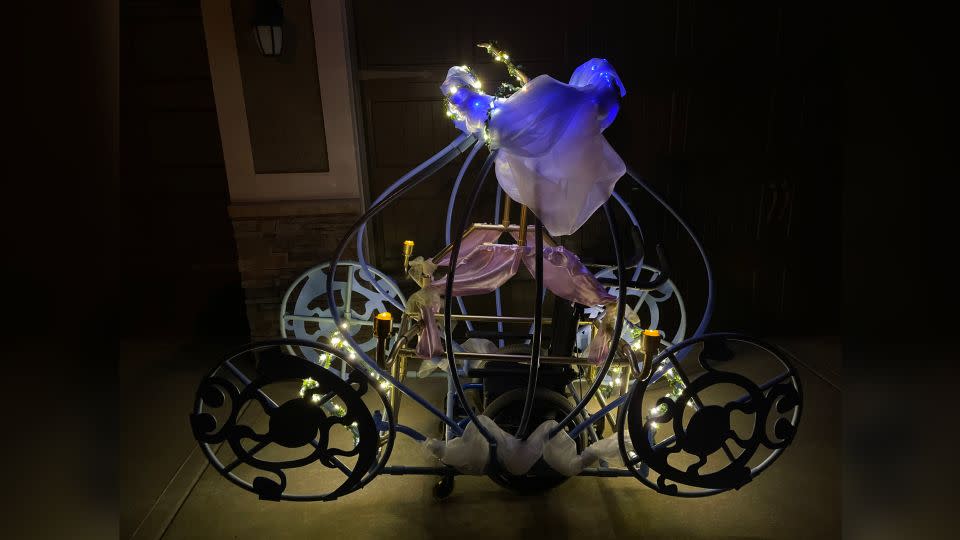
Earlier this month, Walkin’ & Rollin’ Costumes unveiled its 150th costume since launching in 2015. Each one is a labor of love, taking at least three months to build. (The deadline to request a costume for this Halloween was August 1.)
“You can’t mass produce them,” Reese explains. “These costumes are specifically built for the child’s wheelchair, and each wheelchair is different because of the child’s needs.” The non-profit also considers the size of the family’s car and the amount of storage space they have at home.
Even though every costume is tailor-made, all of them abide by three functional rules: first, the costume has to be lightweight since most of their recipients use manual, non-motorized chairs they propel themselves; next, the costume must be easy to get in and out of so parents can quickly help kids get to the restroom or transfer to a different chair; and finally, the costume should fit through doors – a lesson Lon and Reese learned trick-or-treating with that first WALL-E costume.
“If they can’t get through a doorway with it, we’ve completely alienated them and done exactly the opposite of what we want to do,” Lon says. “We want them to be included. We want them to be part of everything that is part of Halloween.”
“A balancing act”
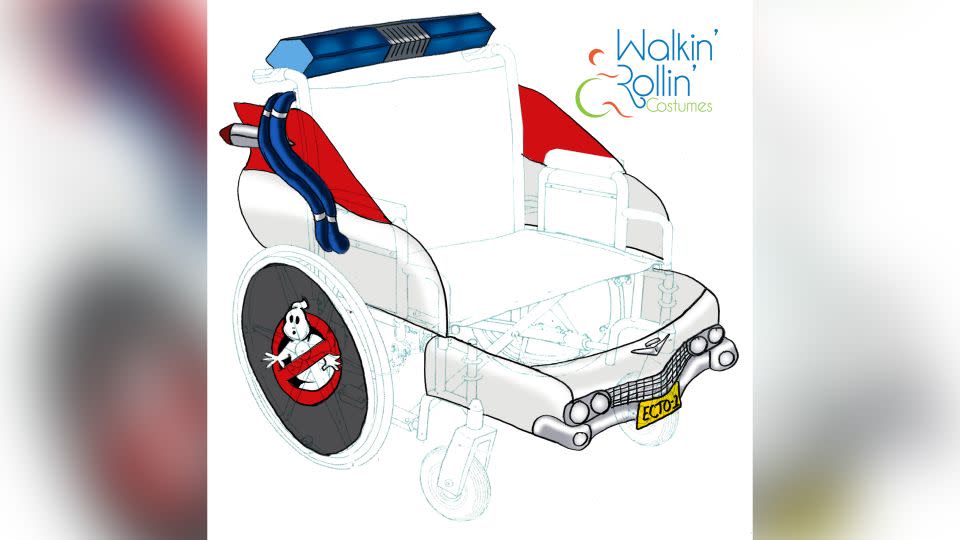
WRC reviews requests via applications on its website. Working year-round with the help of more than 150 volunteers, the non-profit can currently accommodate about 35 costumes a year – great progress since they first began, but still short of the seemingly endless demand.
Several factors influence the decision to grant a costume, like design complexity and available volunteers. (Anyone can sign up to help regardless of experience; the current list of available costume requests can be found here.) First-time builders are more likely to pick simpler projects.
Another is location. With volunteers across the country, WRC tries to pair teams with requests from children in their area. They’ve also made costumes out of their home base in Kansas for kids from Florida to Hawaii, but shipping costs quickly add up.
“The fewer that we ship, the more costumes we can build,” Lon explains. “Anytime we have to ship one, that is going to take out one or two costumes that we can build for other kids, and so it’s a balancing act.”
Hardest to “heartwarming”
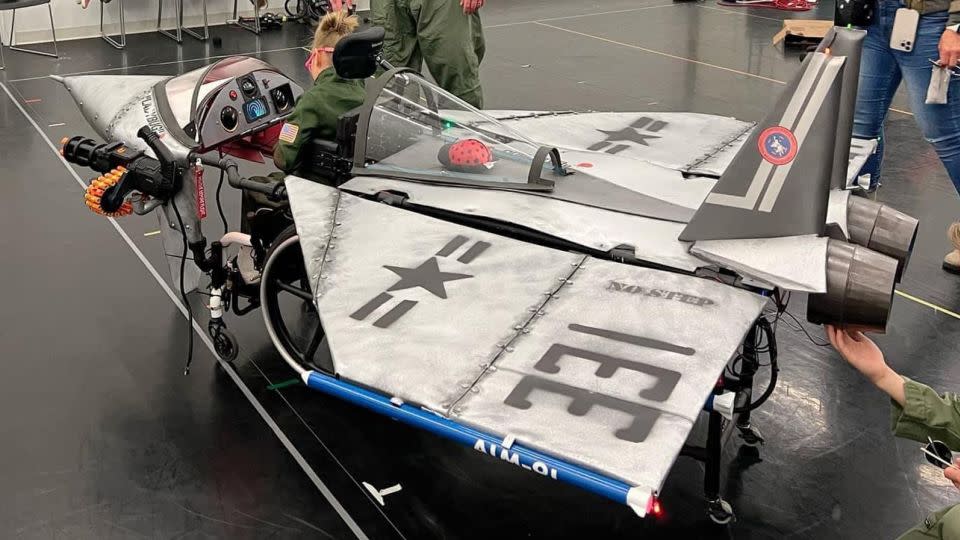
Lon says it’s always hard to decide which costumes they’ll pursue, but the hardest part is helping those who can’t wait until Halloween.
“Sometimes we have built costumes for kids on hospice,” he says, “so we have to push up the timeline and make the costumes quicker so that the families can have those memories of trick-or-treating before the child passes.”
Despite those tough moments, it’s joy that keeps WRC going. The team purposely makes “a big event” out of unveiling every final product. For instance, when they made a “Back to the Future” DeLorean costume for a child in Texas, they held a reveal party at a local DeLorean plant where the lucky recipient got to test drive an actual car.
After kids go home with their treasured designs, Lon says it’s “heartwarming” to see photos of happy children in their costumes trick-or-treating or visiting Disney World. Mirroring Reese’s experience all those years ago, the costumes help them transform from feeling isolated to celebrated.
“I had a parent tell me that for the first time their child was stared at, but not for the reason they were before,” Lon adds. “They were stared at because they were truly interested in and excited about what they were wearing.”
“We share everything”
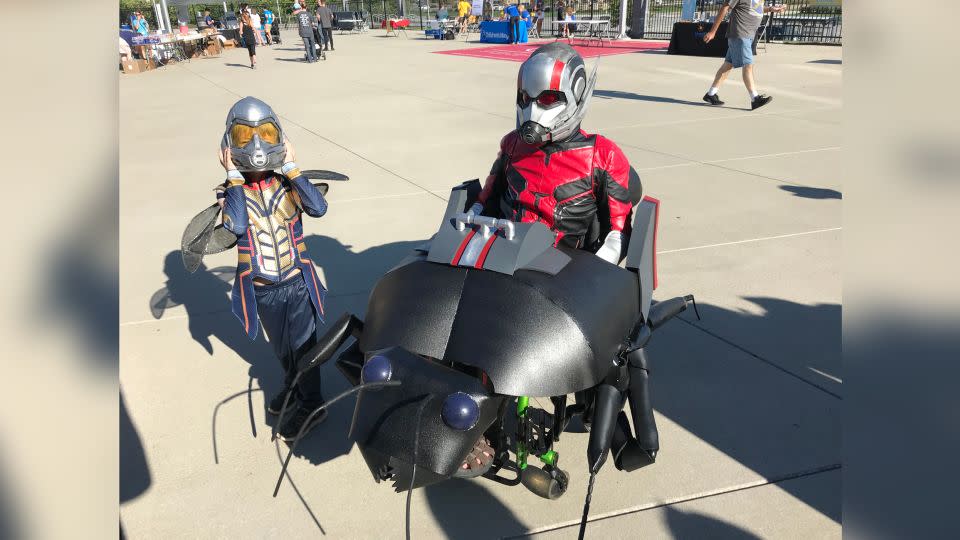
With inclusion as their mission, WRC is eager to make their hard-earned knowledge available to all.
“We share everything because we’ve had a lot of parents who said, ‘we would like to try to build one of these for our own kid, but we just didn’t know where to start,’” Lon says.
This year WRC added a resources section to their website with information on things like costume plans, material recommendations, and 3D printing for parts.
Some local high schools now incorporate WRC in their STEM programs, building half the costumes the non-profit produces each year. Students learn not only technical skills, but also greater empathy and inclusion as they gain firsthand experience using a wheelchair while building costumes.
Beyond metropolitan Kansas City, WRC’s network is growing to includes chapters at Wichita State University and the University of Pittsburgh, plus a Blue Ridge Region chapter covering much of the southeastern United States.
As a national organization, support also comes from outside of those hubs. Companies can sponsor costumes, which make for popular teambuilding projects. Donated materials are also welcome, with volunteers and home improvement stores occasionally chipping in.
Bright future
Reese is excited to start another WRC chapter next year at the University of Arizona, where he’s heading on a wheelchair rugby scholarship. Inspired by his years of designing and building costumes, he plans to study engineering. His goal is to work for Disney to help make their theme parks more accessible.
Lon is incredibly proud of his son, and while Reese is away, he’ll continue to help other kids in need. As for his dream: “I would love to get to a point where we have enough volunteers, enough money, that we can actually build every costume that is requested.”
For more CNN news and newsletters create an account at CNN.com
